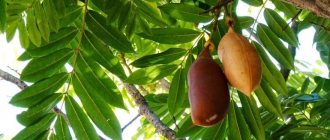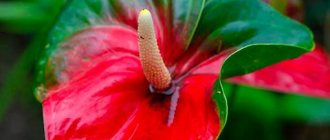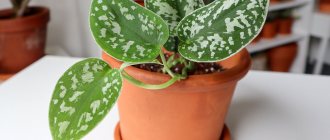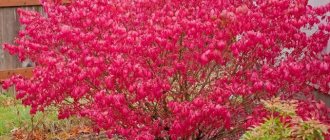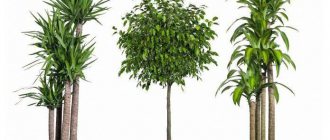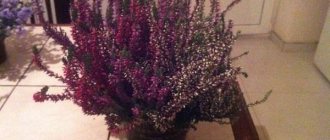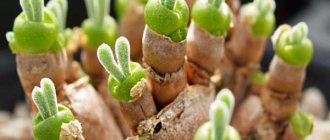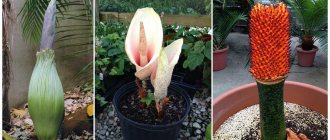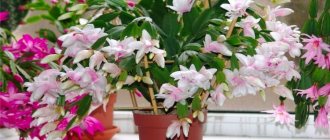Periwinkle: description
Periwinkle can be grown as a creeping or herbaceous plant with erect, rough stems. The leaves, located opposite each other, are represented by leathery, rough, dark green plates of small size with a pointed tip and whitish edges. Large bright flowers appear from the axils in spring.
Single buds have a variety of colors: from pink and purple to snow-white and cream. The corolla is twisted in the shape of a funnel, and an elongated elliptical tube grows on it. Periwinkle is characterized by tall elastic peduncles, some of which can persist throughout the active growing season. The fruit of the plant is represented by two leaflets that open in the middle and produce small brownish seeds.
Periwinkle – photo
To inexperienced gardeners, periwinkles may seem simple and unremarkable. But this is far from reality, because it is not for nothing that spectacular flowering carpets are adored all over the world. Look!
Photo: mrfilin.com
Photo: keywordsbasket.com
Photo: ogorodmechty.com
Photo: sady-msk.ru
Photo: rasfokus.ru
Photo: clinica-opora.ru
Photo: sady-msk.ru
Photo: tr.pinterest.com
Photo: fotokto.ru
Photo: pinterest.ru
Photo: pinterest.ru
Photo: sunhome.ru
Photo: semiyan-semyanych.ru
Photo: banksovetov.ru
Photo: skarvit.ru
Photo: ttcomm.ru
Photo: flo.discus-club.ru
Photo: mommyingbabyt.com
Photo: fb.ru
Photo: na-dache.pro
Photo: flo.discus-club.ru
Photo: romashkino.ru
Photo: pixabay.com
Photo: topfazenda.ru
Did you like the post? Subscribe to our channel in Yandex.Zen, it really helps us in our development!
Periwinkle small, pink and other species, photo
Periwinkle has a large number of different species and varieties, each of which has its own characteristics.
| View | Description | Varieties | Peculiarities |
| Straight | Numerous shoots reach 20-80 cm in height. The leaves are opposite, ovate, 3-6 cm in length, have a mosaic color with beige edges and strongly protruding veins. The rhizomes are covered with small scales and are woody. Flowers 3-5 cm, blue, pink with a white tint. The fruit is about 5 cm. | Albo Plena, Purpurea, Sterling Silver, Ralph Shugert. | Rhizomes are widely used in pharmaceuticals and folk medicine. Found on rocky and gravelly slopes of the Tien Shan. Most often propagated vegetatively, seeds are rarely used. |
| Small | Perennial branched shrub up to 60 cm long. The leaves have a glossy shine, round, slightly elongated, about 0.5 cm, covered with vegetable wax. The peduncles reach 15-20 cm, and one dense bud of blue or bluish color grows on them. | Illumination, Moonlit, Ralph Shugert, Valley Glow, Alba Variegata, Golden, Argenteovariegata, Variegata, Azurea Flore Pleno, Double Purple, Atropurpurea, Gertrude Jekyll. | Shade-loving, its natural habitat is forests and rocky slopes. Distributed in Asia Minor and the Mediterranean. Fruits are formed very rarely, propagated by branching rhizomes. Frost-resistant. |
| pubescent | A compact plant with a well-developed root system and fairly strong thin stems. The leaf blades are smooth, dark green, ellipse-shaped, pointed. The flowers are medium-sized, different colors: there are purple or bluish petals with white. | Bowles, La Grave, Dart's Blue, Sabinka, Marie | It is found in the forests of the Caucasus between placers and on mountain slopes. Unpretentious, characterized by good adaptation and rooting. |
| Grassy | Its liana-like stem occupies large areas and is of medium size. The leaves are elongated, narrow and rough, the edges are covered with villi, pointed, rich green. The buds are located on small stalks, the petals are gracefully curved, most often white. | Alba, Emily Joy, Gertrude Jekyll, Albo Plena, Illumination. | Distributed from the slopes of Greece to the Caucasus Range. In winter, its stems die off to the very base, and in the spring they grow back even more than before. Due to its branching, it is often grown as an ampel species in separate containers. |
| Pink | An erect branching shrub about 60 cm tall. The leaves are dark green, oval, leathery. The flowers grow in large numbers, are medium in size, the color is often pink-red or purple, and there are also plain white varieties. | Grape Cooler, Peppermint cooler, First Kiss. | Found in Madagascar, India and China. It has another name - catharanthus. Used in folk medicine to treat tumors. |
What are the benefits of periwinkle?
Since ancient times, this flower has been used for medicinal purposes. The value of periwinkle is not news to Africans and Indians, who grow this species on an industrial scale. The perennial plant contains tannins, saponins, pectins, organic pigments, and 66 alkaloids.
Some of these substances are cytostatic, meaning they are useful in preventing tumor cells from multiplying. The soft blue colored leaves, roots and petals have remarkable qualities. Medicinal properties of periwinkle:
- hypotensive,
- hemostatic,
- antidiarrheal,
- anti-inflammatory,
- antiseptic,
- immunomodulatory.
In addition, decoctions and infusions:
- useful for regulating the gastrointestinal tract;
- able to stimulate appetite in anorexia;
- used to reduce fever, treat dandruff and regulate hypertension;
- treat malaria;
- useful for diabetes;
- restore the functioning of the nervous system;
- cleanse the blood of toxins;
- remove the effects of encephalitis.
Growing from seeds
This is a rather labor-intensive and complex process. Although the seeds are quite unpretentious, it is necessary to constantly monitor the air temperature, soil moisture and ventilate the containers daily.
With proper care, the first young shoots of periwinkle will not take long to appear. Seeds can be purchased at the store or collected by hand from mature plants.
However, they extremely rarely bear fruit in a garden or home. There are 2 ways to plant seeds: seedlings and open ground.
Pests
Pink periwinkle
The plant is rarely attacked by pests. Periwinkle may only attract aphids. In the place where the flower grows, the possibility of weeds appearing is excluded, so the bed or front garden always has a well-groomed appearance. Planting and caring for periwinkle is extremely simple, so landscape designers recommend taking a closer look at this unpretentious but pretty plant.
Planting periwinkle seedlings in open ground
Sowing of seedlings is carried out at the end of February or mid-March.
- Before planting, you need to soak the seeds in a solution of potassium permanganate to get rid of pathogenic bacteria and fungi.
- Make drainage holes in the container, add soil mixed with peat tablets.
- Leave the distance between shallow rows 3-5 cm.
- Seeding is done with a pinch.
- Sprinkle the seeds on top with the substrate, compact and moisten it.
- Place containers with periwinkle in black tight bags and put them in a warm place for 5-7 days.
- Maintain the air temperature not lower than +23…+25 °C. Moisten the soil regularly.
- Sprouts will appear in 1 week, then the seedlings must be removed from the bags and placed in a well-lit place.
- It is advisable to reduce the temperature to +17…+20 °C.
Young periwinkle needs special care:
- Water regularly, but not often. Make sure that the soil does not dry out.
- 3 weeks after the first shoots, you need to fertilize with nitrogen-containing or phosphate fertilizers.
- Before planting in open ground, feed the periwinkle once every 2 weeks.
- After 4-5 healthy leaves appear on the sprouts, you need to make a dive: 2-4 roots in one container.
Replanting
If you want your flower to bloom beautifully at home, it should be replanted annually. Please follow these rules of procedure:
- Over the course of a year, the periwinkle grows, so each time the pot is taken a few centimeters larger.
- Immediately before planting, the pot should be disinfected, at least doused with boiling water.
- The root system of a flower is very fragile and delicate, it is important not to damage it. Also, before planting, the roots must be carefully examined for viability. Dead and damaged roots should be trimmed back to at least 4 centimeters of dead tissue.
- All objects that will be used to trim the roots must be sharp and disinfected. After pruning, they are also treated so as not to infect another plant.
- The cuts on the roots are sprinkled with fine charcoal.
Planting periwinkle seeds in open ground
Seeds are sown on the site in spring or autumn. This must be done before the onset of frost so that the seedlings do not die or with the arrival of consistently warm weather.
- Prepare the soil thoroughly: loosen and weed the soil to remove weeds, fertilize it with sand, ash, sawdust or peat.
- Make rows at a distance of 5 cm each.
- Disinfect the seeds by holding them in a manganese solution.
- Place them in the furrows and cover them with a layer of soil.
- Compact the substrate layer, add a little sawdust or sand on top.
- Water generously.
How to grow periwinkle?
Rules for care and maintenance:
- Temperature. Does not like low temperatures, although it can tolerate cold and frost. Prefers warm weather with temperatures above 20°. Maximum permissible temperature values in summer: up to +29°.
- The soil. Adapts to any type of soil. The ideal option is well-drained, light, moderately fertile soil with a pH of 5.5 to 6.0.
- Location. It grows equally well in sunny areas and in partial shade. However, light deficiency negatively affects the quality and duration of flowering. Therefore, the best option for growing is southeast, southwest.
- Watering: It is necessary to keep the soil semi-moist at all times. At the same time, waterlogging must not be allowed!
- Fertilizers: nitrogen-potassium compounds with the addition of magnesium sulfate.
Vegetative propagation
There are 3 ways to grow periwinkle: cuttings, layering and dividing the bush. Since the plant rarely produces seeds, such propagation is actively used by most gardeners.
Cuttings
Cuttings need to be prepared during pruning or they can be cut from the apical shoots.
- For rooting, it is enough to place the branches in containers with water so that it occupies a third of the stem.
- All leaves must be removed from the bottom, otherwise rotting will begin.
- You can also use a soil mixture with the addition of root-forming components for rooting.
- It is necessary to change the fluid regularly so that it does not stagnate. To do this, it is advisable to use filtered rather than running water.
- After about 2 weeks, young roots will appear.
- When the root system grows by 2-3 cm, the shoots need to be transplanted into the soil.
By layering
The cuttings quickly take root and almost all survive.
- You need to carefully examine the creeping shoots of the periwinkle and find the places where they form roots.
- Using a disinfected knife, separate the cuttings from the adult plant, treating the cut areas with coal chips or cinnamon.
- If the root system of the shoot is well developed and does not show signs of diseases or infections, it can be placed in a new individual place.
- Thoroughly water and feed the new seedling with mineral fertilizer so that it quickly adapts and begins to grow.
Dividing the bush
In this way, periwinkle can be propagated in any season, with the exception of winter or early spring. Division must be carried out before the first flower stalks begin to form, so that the plant has time to take root in the new environment.
- Carefully remove the bush from the soil without damaging the root system.
- Remove any remaining soil from the roots.
- Cut off rotten, diseased or shriveled roots.
- It is necessary to divide the main bush in such a way that each part retains the basis of an adult plant.
- To make adaptation faster, the divisions need to be planted in the substrate that the mother periwinkle had.
- Place the branches in the planting holes, compact the soil and water thoroughly.
Reproduction
Indoor periwinkle is propagated by seed or cuttings. Both cases have their own characteristics.
Indoor periwinkle is propagated by seeds in February-March. The algorithm is similar to the usual planting of this flower. It is recommended to use last year's seeds, since their germination is better.
Cuttings are carried out in early spring or at the end of summer, when flowering begins to decline. For propagation, apical cuttings are taken. They must be young, healthy and strong. The algorithm is like this:
- Cut cuttings approximately 10 cm long.
- Trim the leaves at the bottom.
- Treat the cuttings with a growth stimulator.
- Place the cuttings in water or well-moistened clean sand.
- Cover with film with ventilation holes.
- Keep the cuttings in a shaded place at 15-18 °C.
- At the first signs of growth, remove the film.
- Gradually increase the lighting intensity.
- Plant it in a permanent place.
Periwinkle: outdoor care
In order for the periwinkle to actively grow on the site and delight with its beautiful flowers, it needs to be provided with proper care.
| Factor | Condition |
| Location/lighting | Light-loving, grows well both in shaded places and in well-lit areas. It is better to place it on the south side of the site on small hills. It can spread along a scattering or curl along a support, fence or fence. |
| The soil | It should be saturated, drained and enriched with mineral and organic additives. Acidity is neutral or weak. If it is loamy, then it must be mixed with sand, crushed stone, peat or ash. |
| Watering | It can do without regular watering if there is enough natural precipitation. You need to make sure that the soil does not dry out and during especially hot periods, water the periwinkle no more than once a week. |
| Fertilizer | 2-3 feedings per season are enough. If the bush withers, turns yellow or becomes infected, the frequency should be increased to 1 time every 2 weeks. Nitrogen, phosphorus or potassium fertilizers are good, especially during the active growing season. You can also use organic matter: compost, pine needles, sawdust or humus. |
| Trimming | Carry out after flowering is completed. Remove all dried shoots, faded flowers and sprouts. It is also necessary to cut off excessively long branches and disinfect the cut areas with chalk. |
Medicinal properties of periwinkle
The chemical composition of the plant includes 2 dozen different alkaloids. They are similar to sympatholytics used in the pharmaceutical industry.
Periwinkle promotes vasodilation, has sedative properties, and lowers blood pressure. The beneficial substances it contains improve brain function. The plant is indicated during the recovery period after a stroke. There are a huge number of folk recipes from periwinkle that help with headaches, bleeding, diarrhea and vitamin deficiencies. The plant is even used in the treatment of oncology.
Indoor periwinkle
Growing periwinkle is also possible in a home environment. To do this, certain conditions must be met.
| Factor | Condition |
| Location/lighting | A well-lit place, protected from direct sunlight. Does not tolerate drafts and frequent ventilation, especially in the cold season. Place the pot in a south or southwest window sill. |
| Temperature | Feels comfortable at +18…+25 °C. It tolerates drought well, but air humidity must be monitored. |
| The soil | Unpretentious, you can use universal soil for indoor plants, in particular for geraniums. Peat or sand should be added. You also need to place drainage at the bottom: broken bricks, eggshells or nut shells, polystyrene foam. |
| Watering | In the summer, once every 2-3 days is enough, the moisture should not stagnate and the substrate should not dry out. Make drainage holes in the pot. In winter, watering should be reduced to once every 4-6 days to prevent the bush from rotting. |
| Fertilizer | Apply every 2 weeks using fertilizer for indoor roses or universal additives. Organic matter is also suitable: humus or pine needles. Do not produce in winter, as the bush is in a state of suspended animation. |
| Trimming | For greater decorativeness and splendor of the periwinkle, its apical shoots must be regularly trimmed as they grow. It is better to do this in the spring, and treat the cut areas with cinnamon or charcoal. |
Reaction to periwinkle
Sections of the plant were often used as an elixir of love. The inflorescences of the culture were dried and ground into powder. The infused remedy was taken several times a day.
The flower contains useful components. They are used in the pharmaceutical industry.
Taking the culture on your own is not recommended. Periwinkle also contains a toxic substance. A small overdose can cause serious consequences. Severe damage to the cardiovascular system may occur.
Periwinkle contains toxic substances.
Pregnant women and children are strictly prohibited from consuming periwinkle components.
Features of variegated varieties
Representatives of these varieties are cared for differently, unlike monochromatic ones. It is necessary to take into account their physiological characteristics:
- Place the shrub in a well-lit area, as sunlight plays a key role in the formation of spotting.
- Variegated representatives are best grown in pots.
- They do not tolerate frosts and low temperatures well, so it is recommended to transplant variegated specimens into separate containers and bring them into well-insulated rooms for wintering.
Growing Basics
soil mixture
All varieties and subspecies of periwinkle belong to unpretentious crops. The plant can actively develop in all types of soil. Unlike other representatives of domestic flora, it gets along well on rocky soil. Excessive waterlogging can stunt growth.
It is advisable to choose a well-drained location on the site. Tree trunks are ideal for growing periwinkle.
Periwinkle prefers a well-drained substrate.
To dilute in a container, you need to prepare a fertile, loose mixture with a neutral reaction. You will definitely need to provide several drainage holes to drain water.
Top dressing
The plant responds well to feeding. When growing periwinkle indoors, you can use indoor crop fertilizer. The plant also actively develops after the use of organic matter and mineral components.
Periwinkle has one little secret. The culture can bloom intensively and abundantly even on the poorest soil. It is enough to use growth stimulants correctly.
Plant container
There is an opinion that periwinkle is not suitable for growing indoors. The vast majority of varieties are intended for landscaping flower beds and flower beds. The plant can reach such a size that it is removed from the site as a weed.
For indoor breeding, breeders have developed a special variety, also known as Catharanthus roseus.
Periwinkle variety for growing indoors.
You can also grow ordinary periwinkle in a room.
In early March, the plant blooms small buds. After a few days, the crop is abundantly covered with delicate azure inflorescences. After flowering, the plant does not lose its decorative effect. Bright foliage can brighten up any interior. Periwinkle retains its glossy hue all year round.
Making a remontant plant from periwinkle is quite simple. It is necessary to pinch off all the greens in early spring. There should be one stem only ten centimeters long on the surface of the soil. After a few weeks, several young shoots will appear. The plant will be abundantly covered with inflorescences. Be sure to moisten the soil abundantly during this period.
Features of cultivation in Siberia and the Urals
In general, caring for the shrub is not much different, but due to low temperatures, periwinkle is often grown as an annual. The climate in these areas is sharply continental, which significantly complicates the wintering of the plant. After severe frosts and prolonged cold weather, the shrub dies and the next year you need to plant seeds or seedlings again.
However, there is an alternative option: carefully trim in mid-autumn, then carefully dig up the periwinkle without damaging the root system and replant it in a separate container with a ready-made nutrient substrate.
It is necessary to keep the shrub in a warm, well-lit room until warm weather arrives. In April-May, the shrub can be replanted in its designated area.
Features of the party
The nocturnal plant has erect branched shoots, the height of which can vary from 0.5 to 1.2 m. Alternately arranged whole sessile or petiolate leaf plates are green in color and lyre-shaped or lanceolate in shape, with a jagged edge. There is pubescence on the surface of the shoots and foliage. Loose racemose inflorescences consist of fragrant small flowers, which can be double or simple, they are colored pink, lilac, white or purple. The fruit is a cylindrical pod, linear or tetrahedral with barely visible ribs. During the first season, the plant forms a dense rosette consisting of basal leaf plates, and the formation of the stem and inflorescences occurs the next year.
Popular articles How to make water clear in an artificial pond
Hesperis, night violet
Errors when leaving
| Problem | Cause | Corrective measures |
| The leaves turn yellow, dry out, and fall off. | The air in the room is too dry, irregular watering, direct sunlight, temperature violations. | Increase humidity and frequency of watering, prevent the substrate from drying out, remove dried parts of the bush, lower the temperature to normal (+18…+25 °C). |
| Few buds or their complete absence. | Drafts, unsuitable fertilizers, cold air and sudden temperature changes. | Change the location of the pot, avoiding blowing and do not use nitrogenous fertilizers during the period of active flowering and bud formation. |
| Flowers bloom and fall. | Poor lighting, infrequent watering. | Move the periwinkle, providing access to sunlight, and water more often. |
| The edges of the leaf plate dry out and turn yellow. | Low humidity. | Spray the bush more regularly. |
Plant care
Periwinkle is an undemanding plant, but it still needs to be cared for correctly. Care is standard and uncomplicated. Only following the rules will lead to the flower growing healthy and beautiful.
Watering
Periwinkle loves water, so watering should be regular, but not too much. Excessive amounts of water will negatively affect the flower - the roots will begin to rot. And it is easier to replace a plant with such a root system than to treat a subshrub.
It is necessary to water as soon as the earthen ball dries out. Optimally - 3 times a week. Most often, pots with indoor flowers are placed in pallets. Moisture stagnation should not be allowed. If 10–20 minutes after watering there is still water in the pan, the liquid must be drained.
Lighting
Periwinkle needs diffused light. The container with the flower can be placed on the windowsill, but it is important that direct sunlight does not fall on the plant in the first half of the day. If there is not enough light for it, the stems will begin to stretch. The result is a loss of attractive appearance.
Temperature
The flower does not tolerate heat. The most suitable temperature for it is +25°C. You cannot leave a pot with a plant where it is too cold. The temperature can be reduced to +20°C.
Humidity
It is important to maintain the required level of air humidity. To do this, the plant must be sprayed periodically. It is necessary to use purified or well-settled water. The liquid should not be cold - only warm or room temperature.
You need to spray in the morning so that the moisture has time to evaporate before dark. The procedure with flowering plants should be carried out especially carefully. Do not allow water to get on the buds, because in this case the flowers will quickly lose their beautiful appearance.
Top dressing
Periwinkle, like other flowers, needs to be fed. It is necessary to apply fertilizers almost all year round, but this is not necessary in winter. During the period of active growth, feed every two weeks. Thanks to this, the plant will delight with abundant and long-lasting flowering.
Important! Applying fertilizers to dry soil is strictly prohibited. In this case, the concentrated solution can negatively affect the roots of the plant and cause them to burn.
It is necessary to use mineral fertilizers. In the spring, nitrogen fertilizers are applied, which contribute to the formation of green mass. During the flowering period, phosphorus fertilizers are used.
Trimming
Periwinkle is a trailing plant, so it needs to be pruned annually. To maintain a compact plant shape, long branches should be shortened. You also need to get rid of wilted buds in time - this way you can extend the flowering time.
Did you know? Tinctures and decoctions based on periwinkle are effective for impotence and erectile dysfunction. Only herbs collected during the flowering period are suitable for preparing products.
The crown of the plant will be dense if you pinch the tips of young shoots, which will then begin to form lateral branches. It is also necessary to carry out sanitary pruning regularly. I remove weak or damaged shoots. Be sure to use only sharp tools so as not to harm the health of the flower.
Transfer
Periwinkle needs to be replanted annually. Thanks to this, its flowering will be very beautiful and abundant. Every year the pot should be taken several sizes larger, as the flower grows and needs enough space. Before transplanting, the container must be disinfected - at a minimum, pour boiling water over it, and at most, use special means. Also, before planting, you need to carefully examine the root system of the plant.
Roots that have lost their viability should be removed. When pruning, step back 4 cm from dead tissue. The cuts must be sprinkled with charcoal. It is necessary to replant in a special soil mixture - the same as for the first planting. A description of the process of transplanting periwinkle from pot to pot is presented below. Adult plants can be replanted twice a year, and young plants - strictly annually.
Follow the step by step instructions:
- Place a drainage layer on the bottom of the container. Use expanded clay, broken bricks or clay shards.
- Place the flower in the center of the pot and simply fill it with fresh soil.
- Pack the soil around the plant well to avoid any air pockets.
- Water the flower generously.
- If the soil has settled too much, add more substrate to the pot.
Pests and diseases
| Problem | Cause | Corrective measures |
| High humidity, infection from vectors (aphids) or another plant. Rust. | Agromedicine, Propi+, boric acid solution. |
| Infection from vectors or by air (spores landing on the outside of the plant). Powdery mildew. | Raek, Gamair, Fitosporin, Vectra. |
| Scale insects. | Soap solution. Manually remove pests and plaque. Insecticides. |
Description
The houseplant periwinkle is a herbaceous perennial or subshrub. Its main characteristics:
- dense and glossy leaves, their shape is oblong;
- branched stems;
- the length of shoots can reach 0.6 m;
- height weaving;
- flowers are white, pink, lilac, purple;
- long flowering, occurring in May-September; with proper maintenance of periwinkle, it lasts for all 5 months.
Attention! The abundant flowering of indoor periwinkle has a significant disadvantage - it depletes the plant, which can lead to its death. Proper care will help you avoid this.
Periwinkle flowers are quite large with a small 5-incision calyx
Beneficial features
Traditional medicine successfully uses the plant to heal wounds and scratches, and to combat inflammatory processes. Periwinkle extract has anti-inflammatory properties and is used to treat rhinitis and stop bleeding.
When placing pots of catharanthus in the house, do not forget that the flower is poisonous, so it is not recommended to place it in places that are accessible to small children and animals.
Indoor periwinkle is a very beautiful decoration for window sills; it gracefully decorates any room in the house. The plant is completely independent and does not require special care or supervision. And when the periwinkle is covered with delicate and pretty flowers, the heart of any flower lover will not be able to remain indifferent.
Indoor periwinkle is well known to gardeners, like cayenne jasmine or Madagascar vinca. The Latin name "vinca" is given to it due to its ability to weave and entwine. Tropical forests are the area where it is found in the wild. But its main habitat is the island of Madagascar.
Periwinkle is an indoor plant that reaches a height of 60 cm. It has branched stems and dark green oblong leaves. The colors of the flowers are different - white, lilac and pink. If you create all the conditions for the growth of the plant, it will bloom in all its glory throughout spring and summer.

